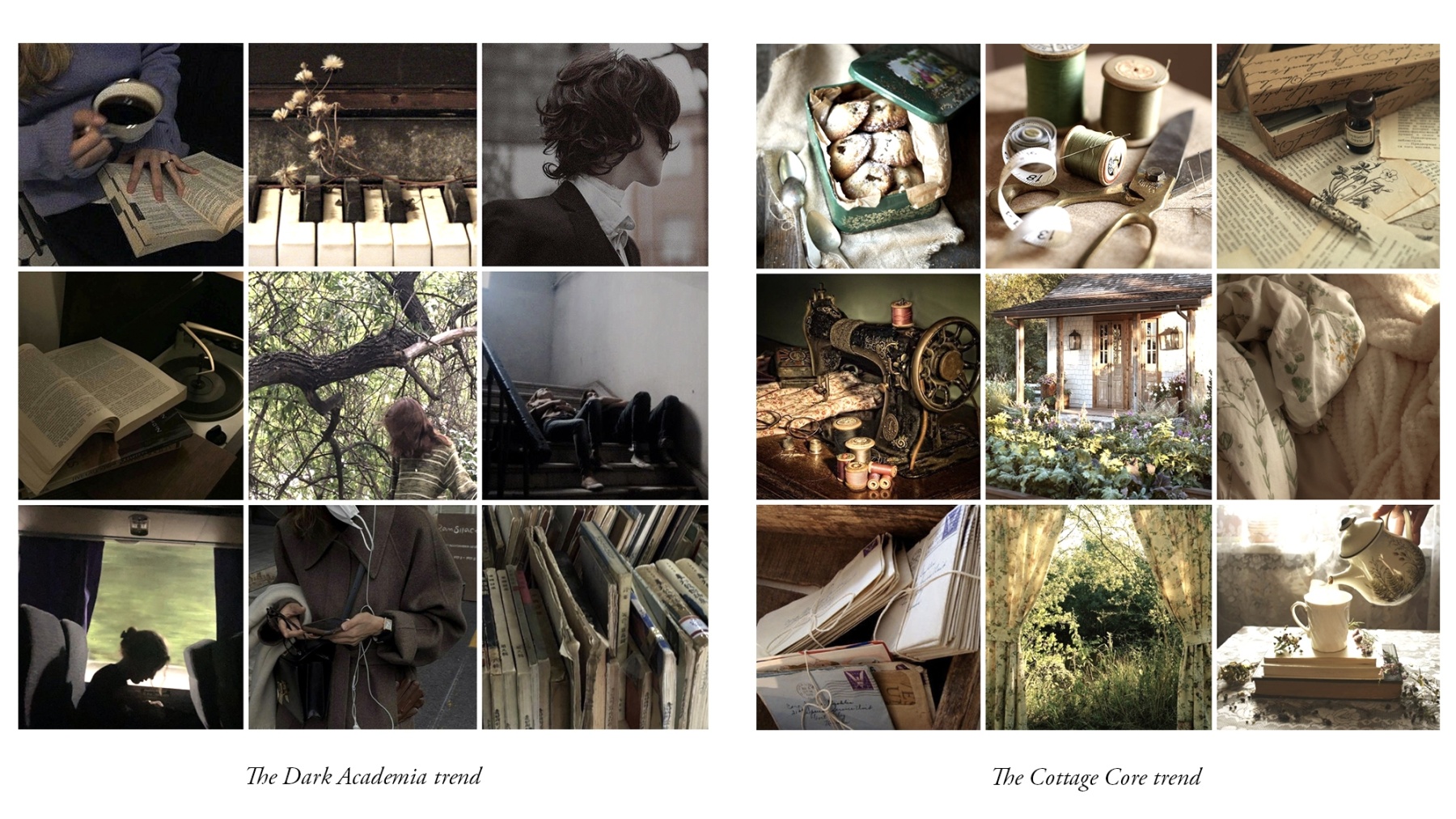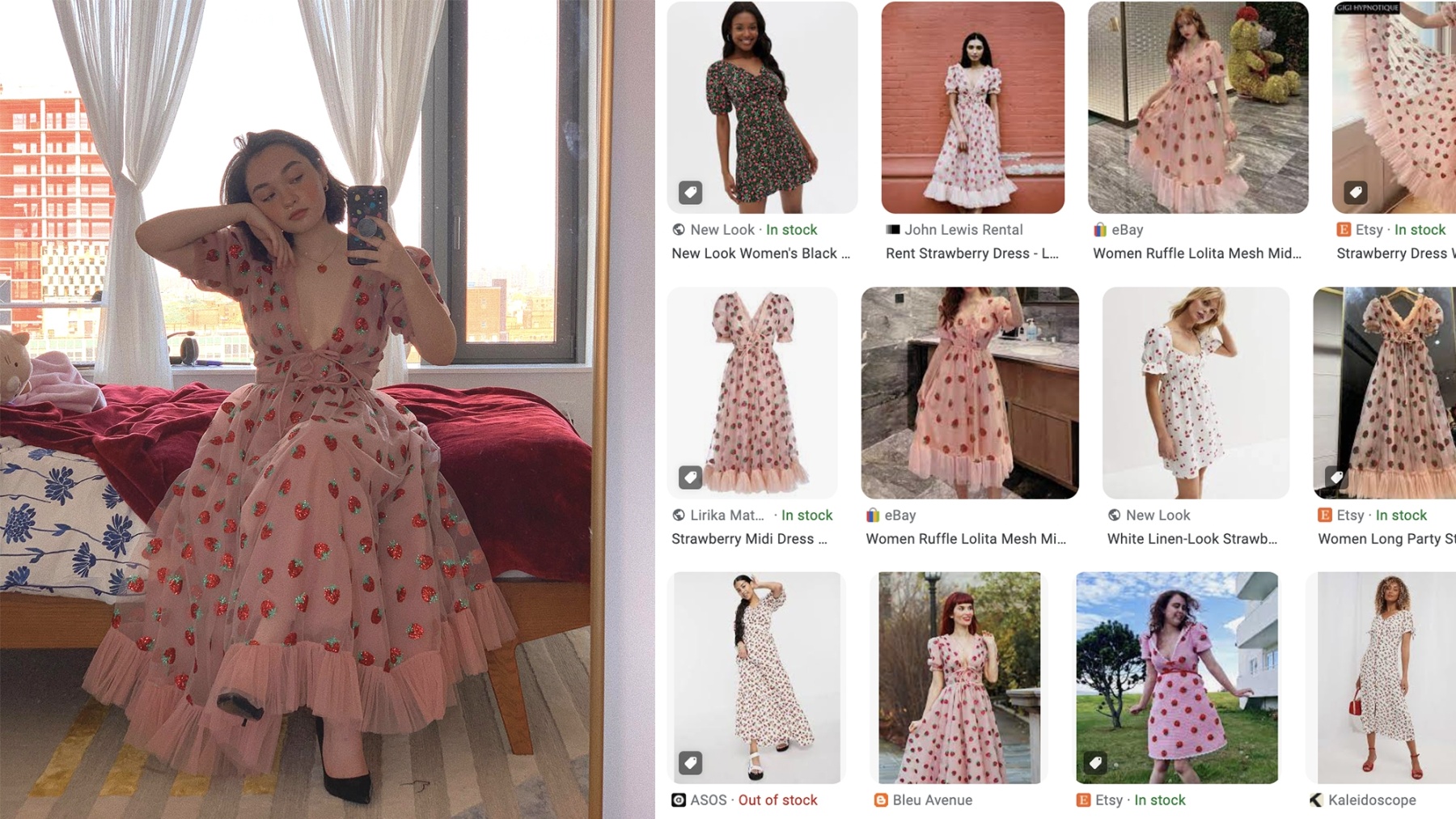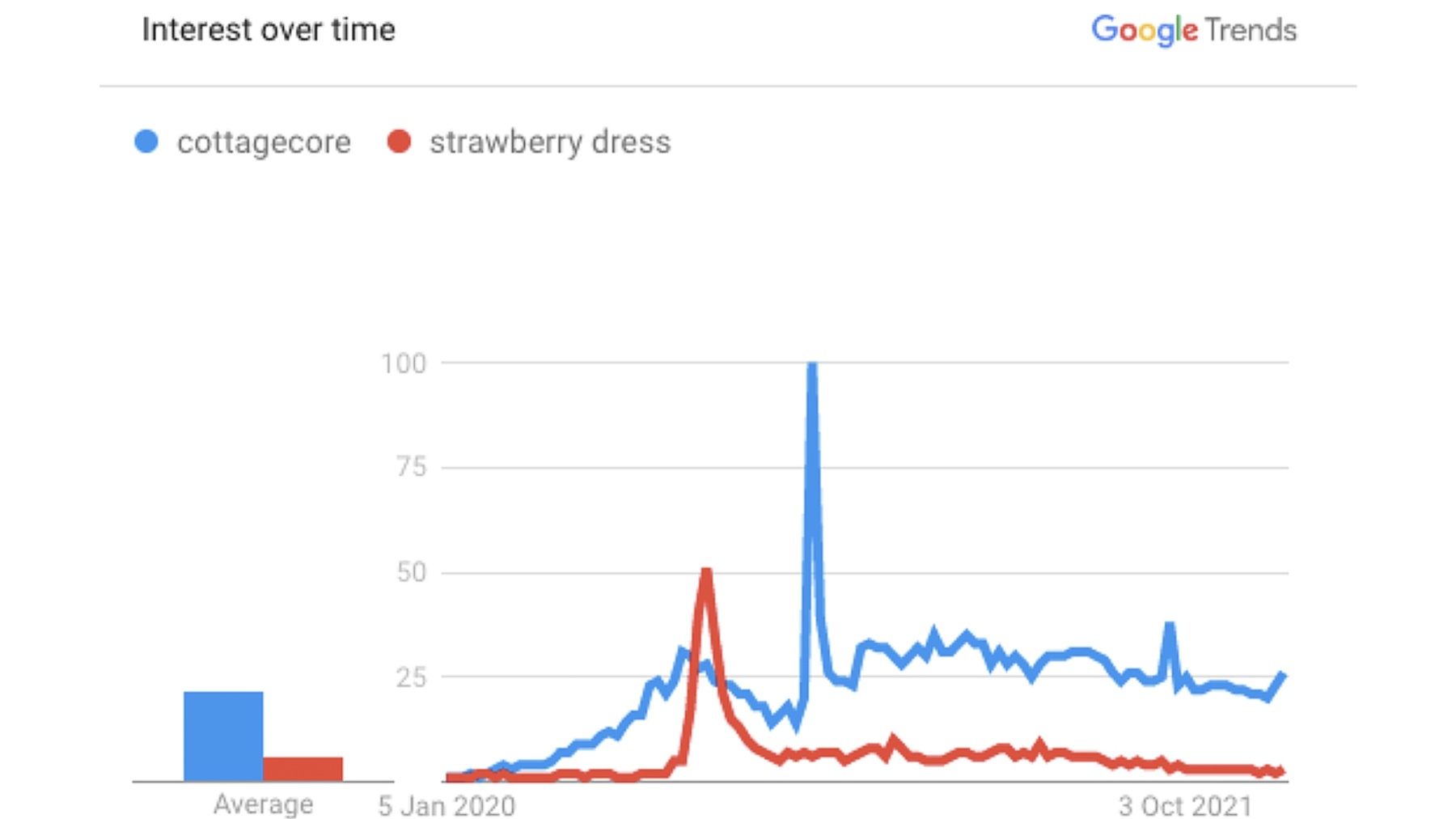
The Trend to End All Trends
Are trends dying? One of the most traditionally accepted fashion trend cycle theories is that it lasts 20 years and undergoes 5 phases:
1. Introduction
2. Rise
3. Peak
4. Decline
5. Obsolescence
This 20-year cycle is still present today for macrotrends, however, the lifespan of microtrends has been compressed. Before they lasted 3 to 5 years, now they can go through the same 5 stages in weeks.

The Dawn of the Microtrend
Microtrends that are popular amongst Zoomers and younger Millennials often embody a specific mood or vibe. They manifest through fashion, interior design, media, or attitudes. Some make it to mainstream, such as dark academia, while others are too niche and lose steam before mass adoption, like clowncore.
TikTok is instrumental in their rise, the platform catapults them into the microtrend arena, where the aggressive algorithm lures in potential consumers.
Interested in baking bread? Here is a cottagecore video of a woman wearing a pretty dress in her cute garden
Are you a girl who likes video games? This kawaii all pink gaming set-up with cat ear headphones should be right up your alley.
As microtrends gain traction, they cross paths of average internet users, kicking off early mass adoption, devoid of the original context. As their feed becomes oversaturated with the same clothing, colour palettes, and media, the aesthetic loses its novelty and meaning, and netizens move onto the next microtrend. Many leave the community and look back with mild embarrassment – how could they participate at the time in something now
outdated?

How Microtrends Damage Brands
Giving birth to a microtrend can be a double-edged sword, and nothing exemplifies this as well as “The Strawberry Dress”. Designed by Lirika Matoshi, the pink, fluffy, sequined dress rose to prominence in late summer of 2020, coinciding perfectly with the popularity of cottagecore and the escapism it represents.
Naturally, fast fashion brands, such as YesStyle, Cider, and Shein seized the opportunity and created dupes of the $490 dress. The subsequent oversaturation of the dress in online media – shopping hauls, aesthetic photos, even memes – meant that people got sick of seeing it.
A piece that only started to become trendy in July was out of favour by October. A piece that allowed people to elope from the horrors of the pandemic, that was supposed to represent a slow lifestyle and an appreciation for nature, fell victim to the new chaotic trend cycle, encouraged by social media.
The over-consumption that this trend cycle facilitates is inescapable, meaning it can be significantly increase sales short term and discovery of the brand. However, long-term this may limit the brand to being synonymous with a trend that no one cares about.

The Efforts of Anti-Trends
Enter Corecore, the core to end all cores. Corecore is a video editing style popular on TikTok that highlights the absurdity of absorbing content in 21st century. It’s a montage of bleak, juxtaposing clips from social media, the news, and movies, with melancholic music in the background. As this trend grows, differing interpretations of these videos crop up– some see it as deconstructed art that is supposed to be introspective, where the user decides on the meaning themselves, while others declare that its original intent is to highlight the dread of living in late-stage capitalism. Nonetheless, one thing everyone in the comments can agree on is that it is special.
TikTok user @kylemakesshortfilms states that it resonates with people because “we live in this time where we rely on the algorithms to recommend things for us to watch, we’re often bombarded by all these very contradictory images, like violence, charity videos, prank videos.” It’s disorienting, it’s tiring, it’s addicting, it’s depressing. The doomsday clock moves 10 seconds closer to midnight, and all we can do is consume.
Corecore is now gaining popularity, and despite its ironic name, its anti-capitalism and anti-consumption messages, it is still following the same, tired, harmful trend cycle. Even Corecore is bound to be discarded, as the aesthetic becomes stale and overused, and loses its original meaning.
What happens after that? Corecorecore – a trend that targets the death of Corecore? Perhaps consumercore – an aesthetic that is self-aware of its promotion of overconsumption?
I honestly don’t know, and I am tired of thinking about it.
Author: Alice Pukhova, Creative Researcher, WMH&I.